
Herman Melville’s epic Moby-Dick was first published as The Whale on October 18, 1851 – the book was “expurgated to avoid offending delicate political and moral sensibilities”. In November of that year, the uncensored version, featuring the Epilogue telling of how Ishmael survived to tell his tale, was published in the USA. Now called Moby-Dick, the long book, with its educational, insightful, obsessive and not a little prolix chapters on whaling and the whale, was not an instant hit. The book that most of us with a desire to write wish they had written was far from universally enjoyed. It still isn’t. Clive James wrote in 2007: “It’s not so much that I find language contortedly and even wilfully archaic: more than that I find it makes a meal of itself, as if foretelling a modern critical age in which it is fated more to be taught than enjoyed.”
Nowadays the book’s a ‘classic’, but how many of us have read all the words – 135 chapters – and finished it? Not many. Not enough. Garrison Keillor noted in 2016: “With the time I’ve wasted over the past 40 years looking for my reading glasses, I could have written Moby-Dick and written it better. Not all that yik-yak about melancholy and breakfast and the nature of evil, but cut to the chase and harpoon the dang whale and bring a couple of dames aboard the Pequod for the general interest.” He was only half joking. He’d never read the thing.
Moby Dick is a “storehouse of language, incident and strange wisdom”, the story of the heroic whale who endures a persistent effort to exterminate it. The book is worth the effort. But it takes time. We need help. We need a way to let us move through the book. Step forward artist and librarian Matt Kish, who took on the mammoth task of illustrating the book’s 552 pages of what he calls “the greatest novel ever written”.
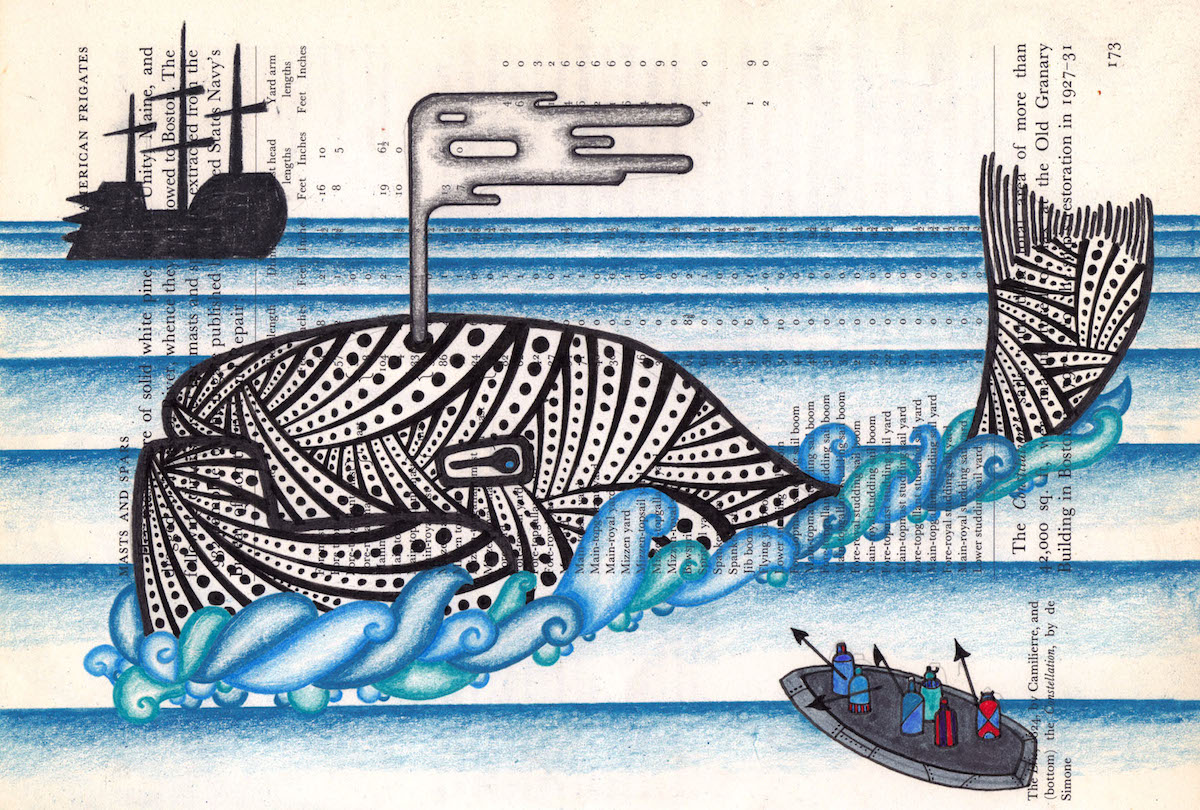
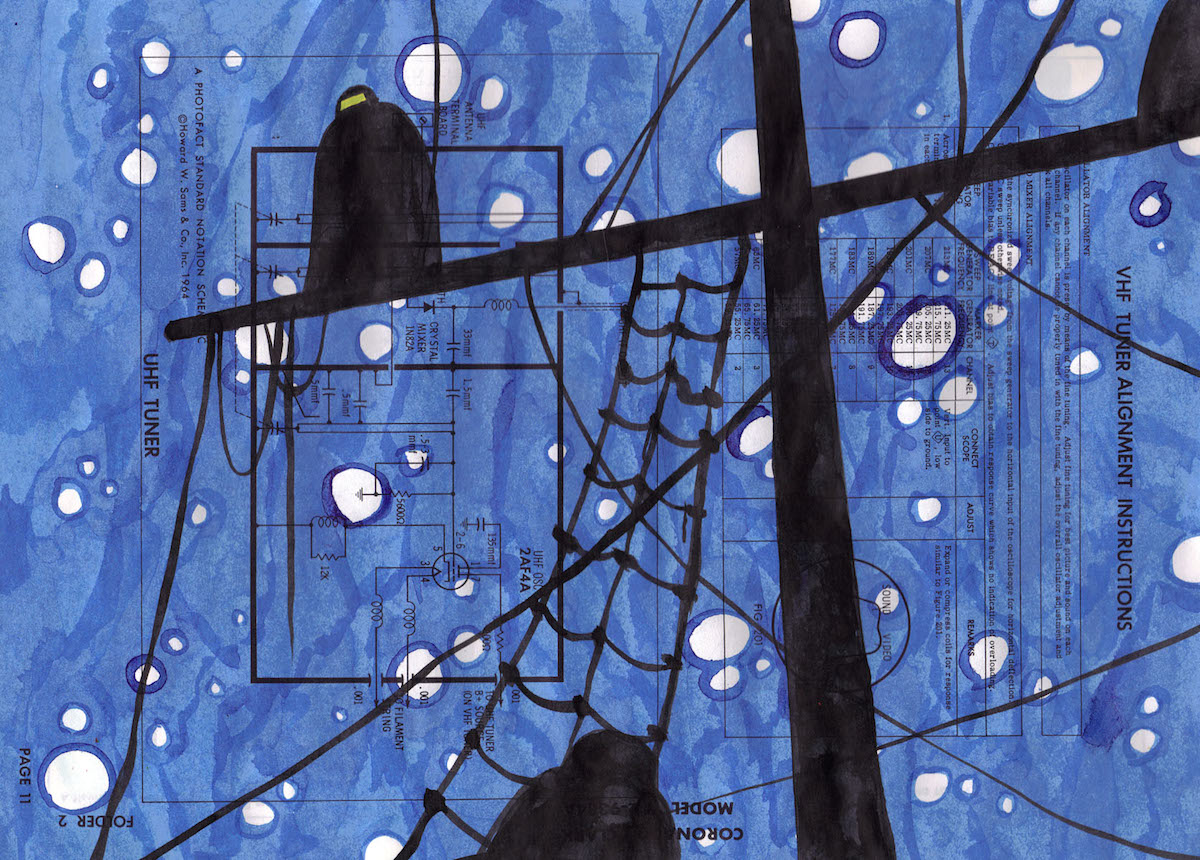
“I have been making art my entire life, but in 2009, having just turned 40, I felt burned out,” says Matt. “I decided that I would attempt one final ludicrously ambitious project, and then quietly bow out. Melville, and Moby-Dick, came to mind immediately because the novel had been a constant companion to me since I was in junior high school.
“I had read Moby-Dick eight times prior to this illustration project, and each reading was at once familiar and yet entirely new. The book seemed endlessly revealing, and endlessly mysterious. And, as an artist, every reading had been something that I had quite literally ‘seen’ in my mind while reading the words on the page. Over many readings and many decades, I had filled the story with imagery accrued from a lifetime of looking at and making art.
“Visually, Moby-Dick was some strange hybrid of Melville’s tale and my own life. I decided it was fitting that my final project would be to immerse myself again in the novel and create what was, for myself at least, the definitive illustrated version of Moby-Dick. I wanted a slow, intense pace through the book so I decided to create one illustration a day, every day, for every single one of the 552 pages of my Signet Classics paperback, and on August 4, 2009 I began. It consumed almost a year and a half of my life, and near the end the deck of the Pequod felt more real to me than my real life. Ultimately the obsession grew, and I completed the task in 543 days. Looking back, I remain intensely proud of what I have created, and I continue to engage with and explore the work of Melville as an artist. Even now, I am working on recopying every word of his Benito Cereno, and illustrating every page of that, in two sketchbooks.”
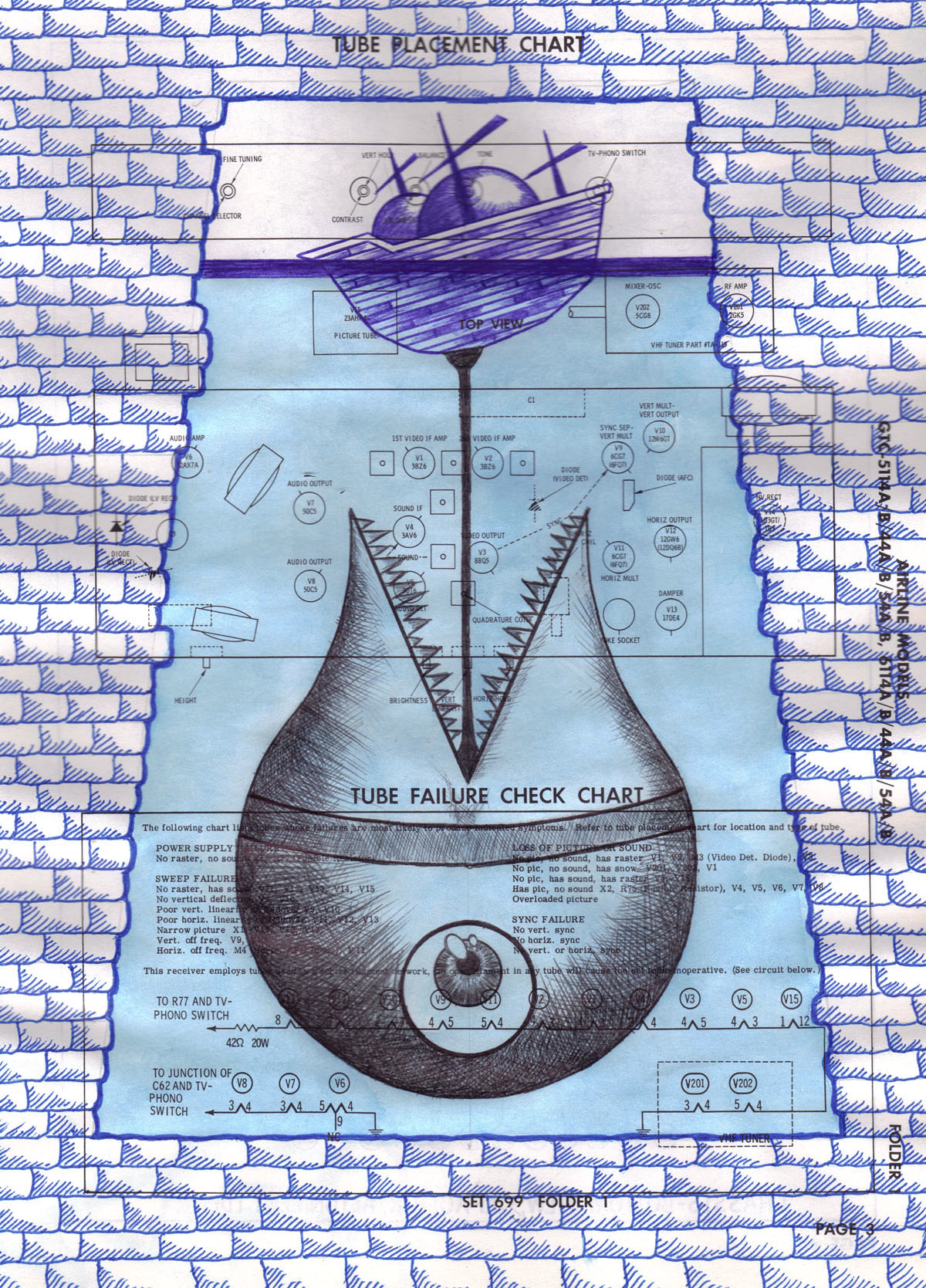

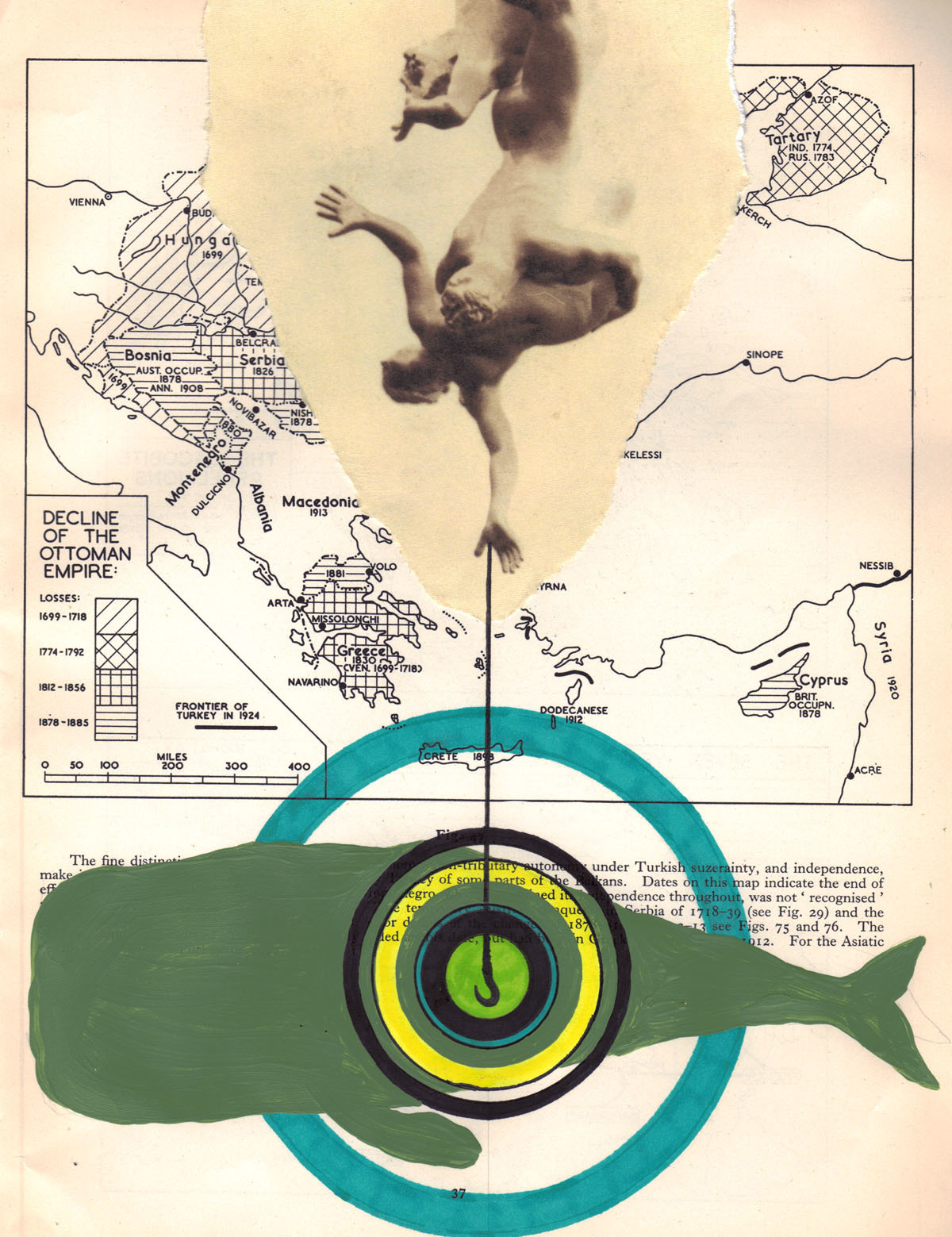

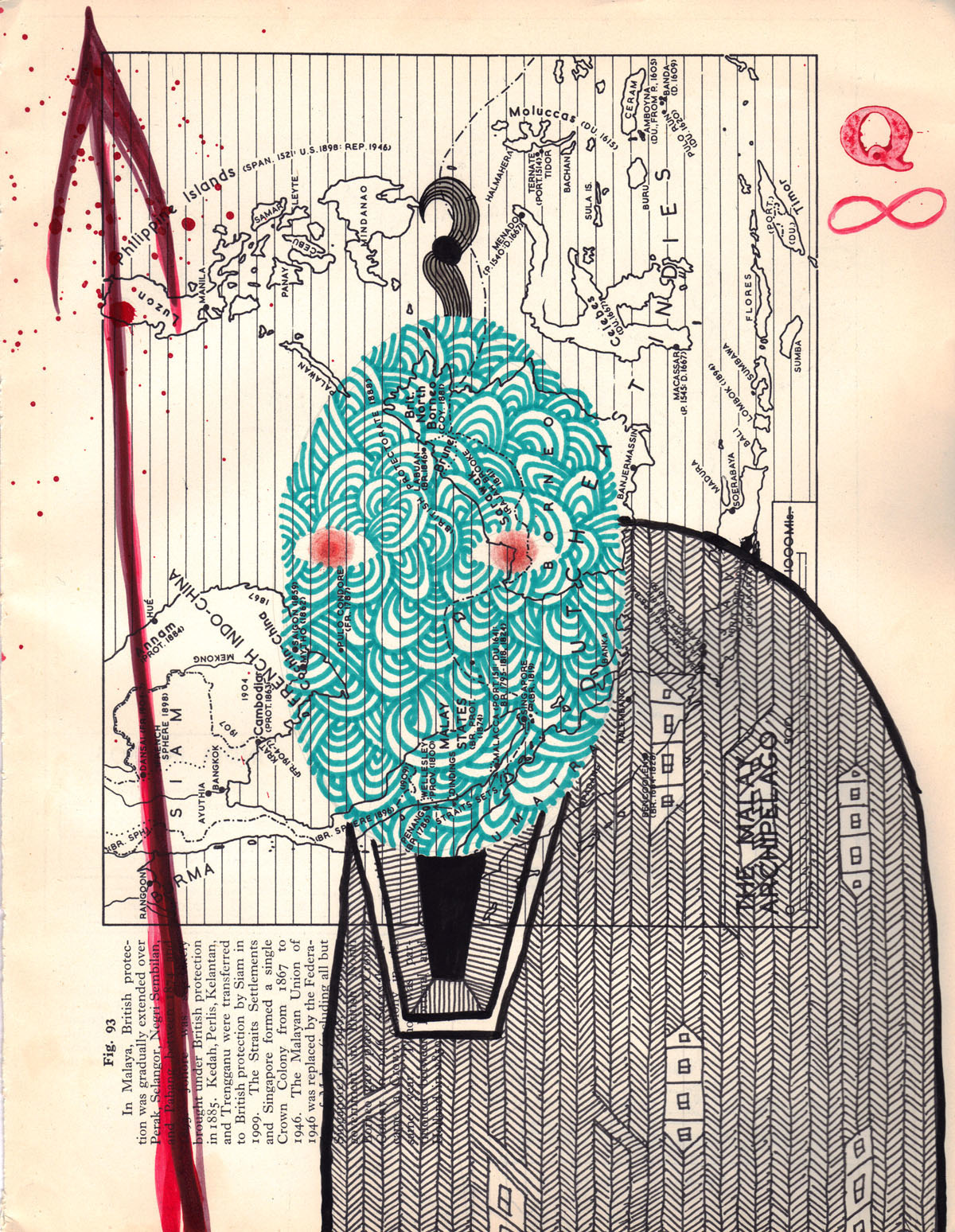
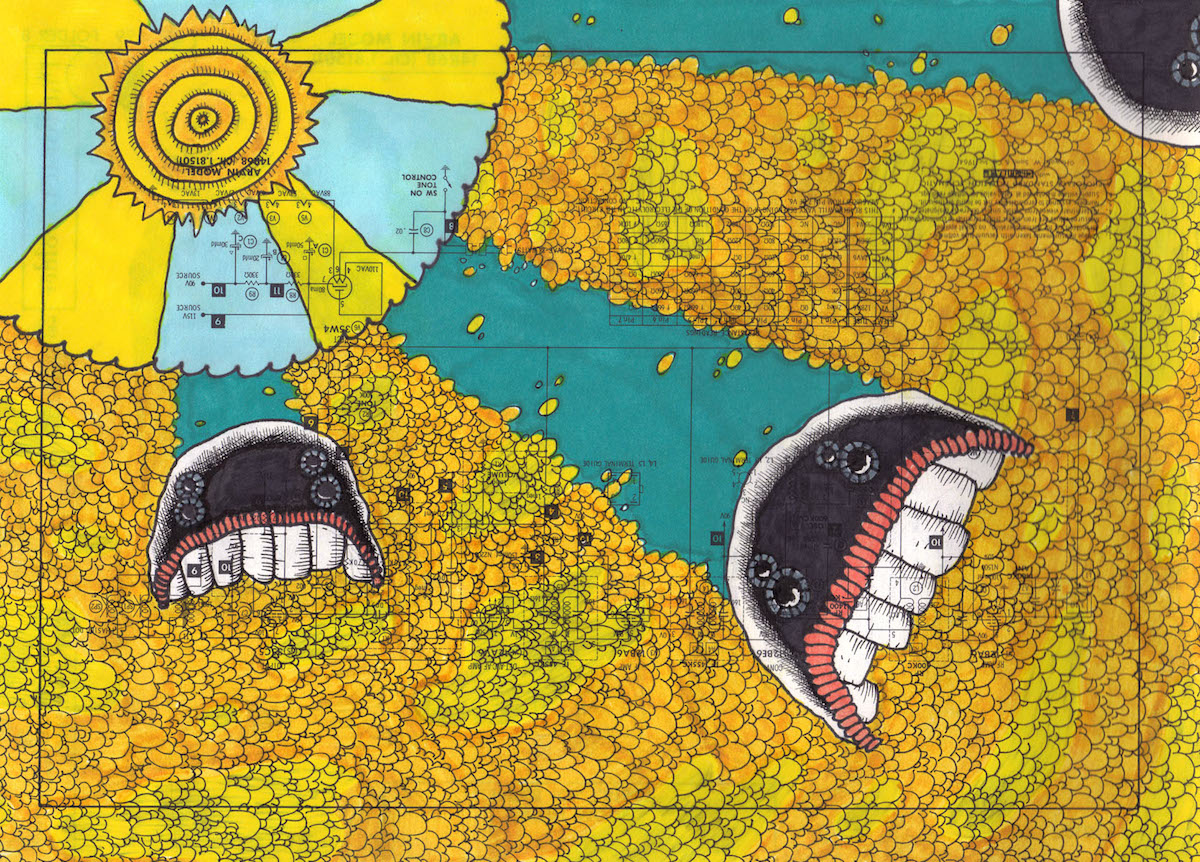
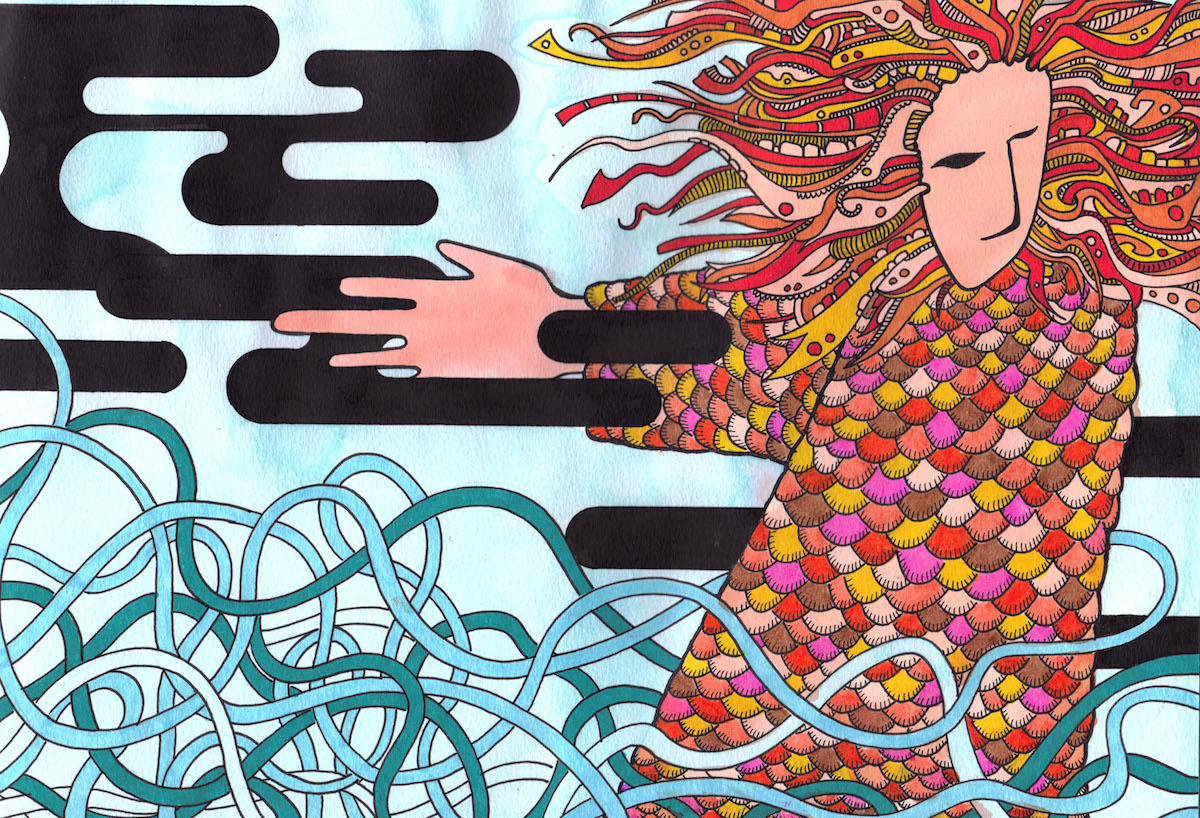

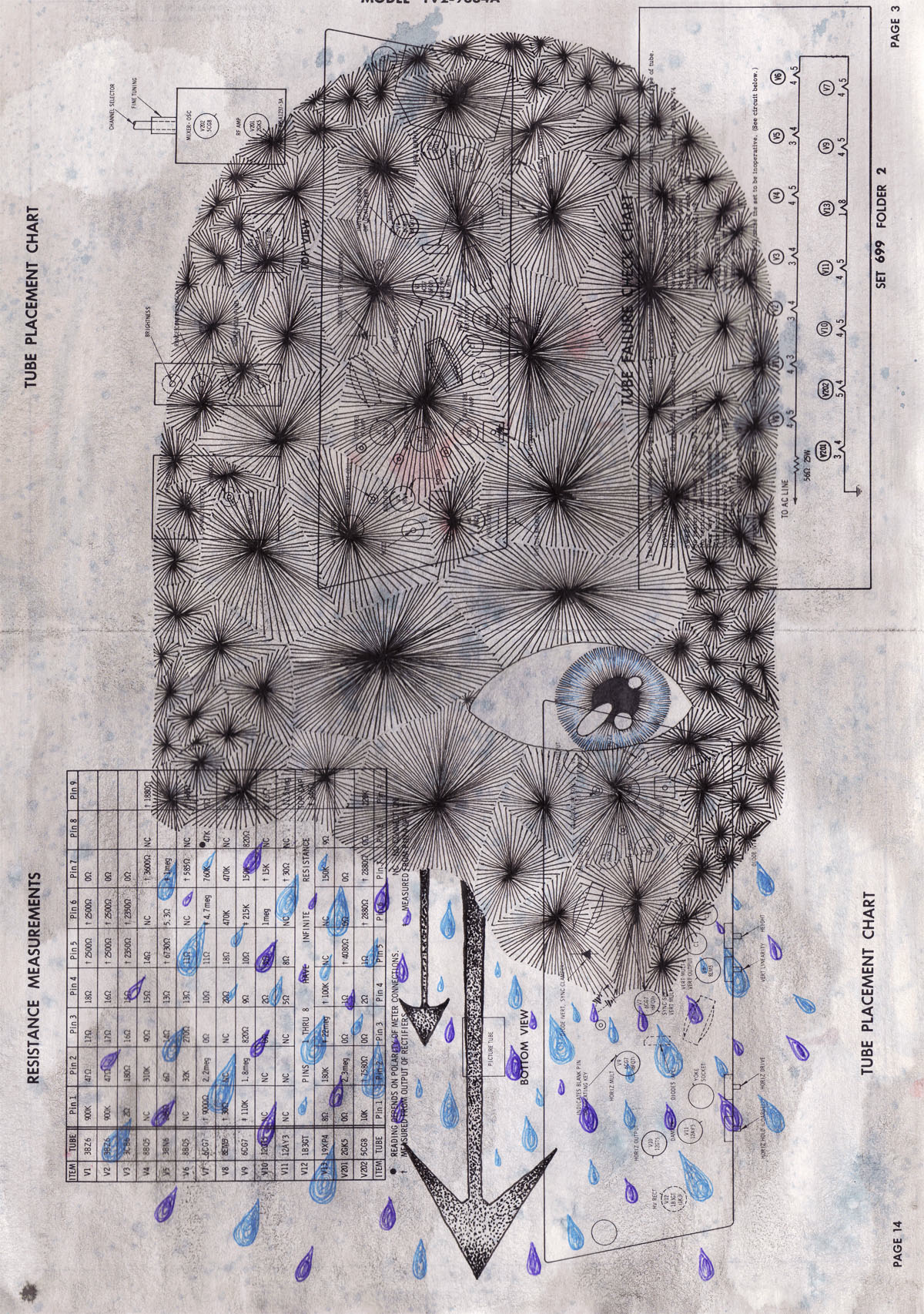
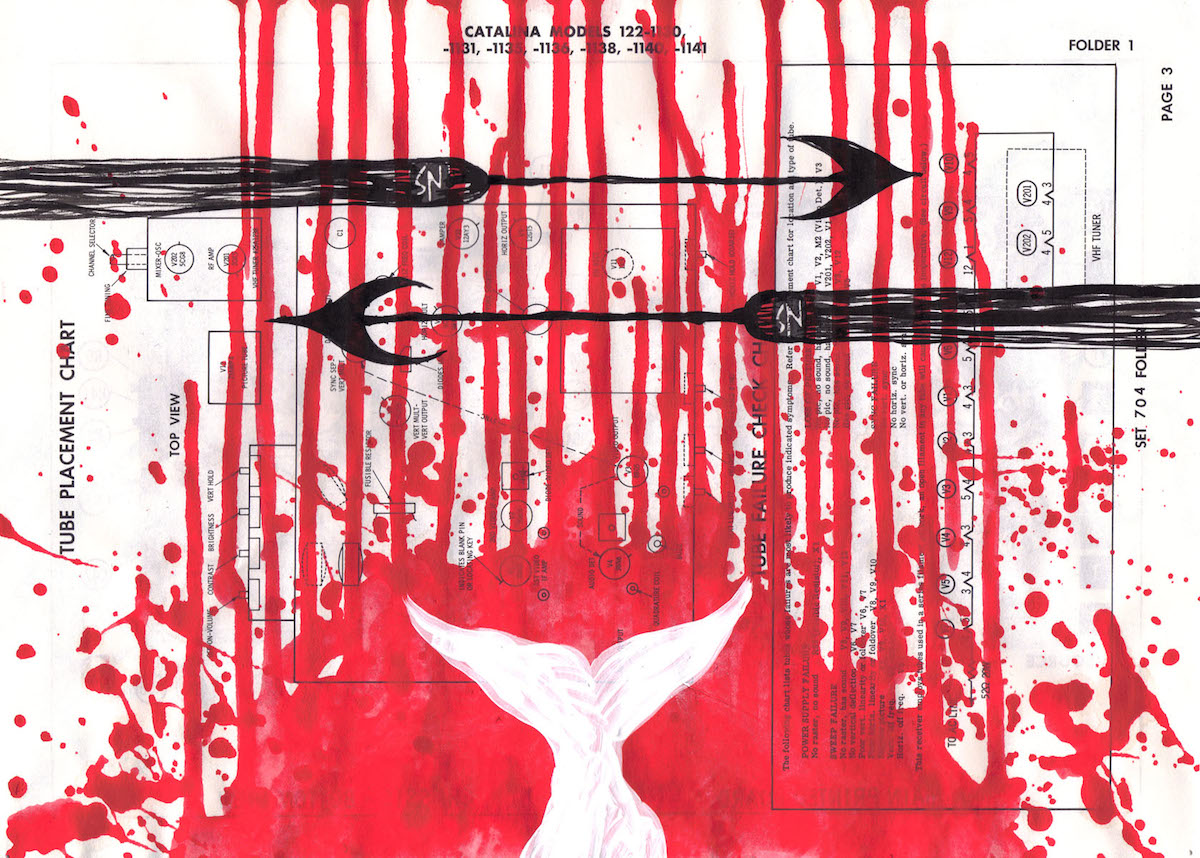


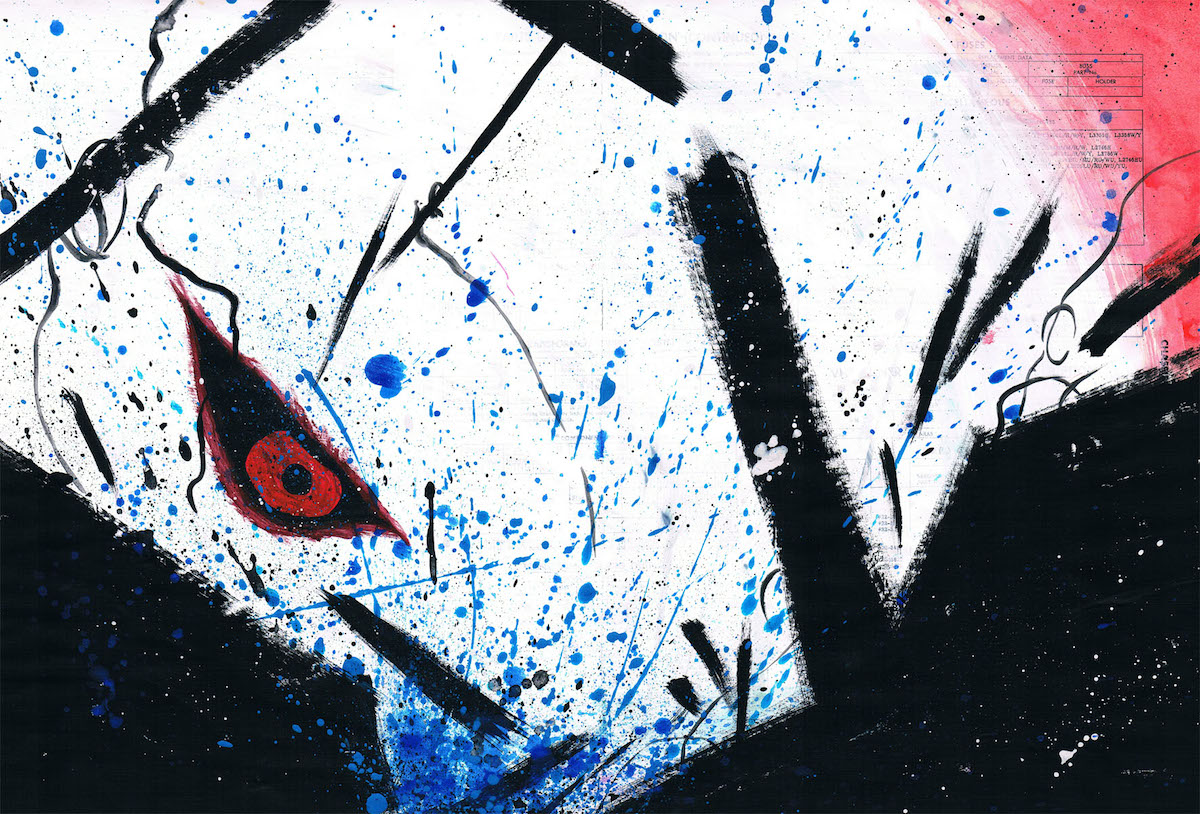
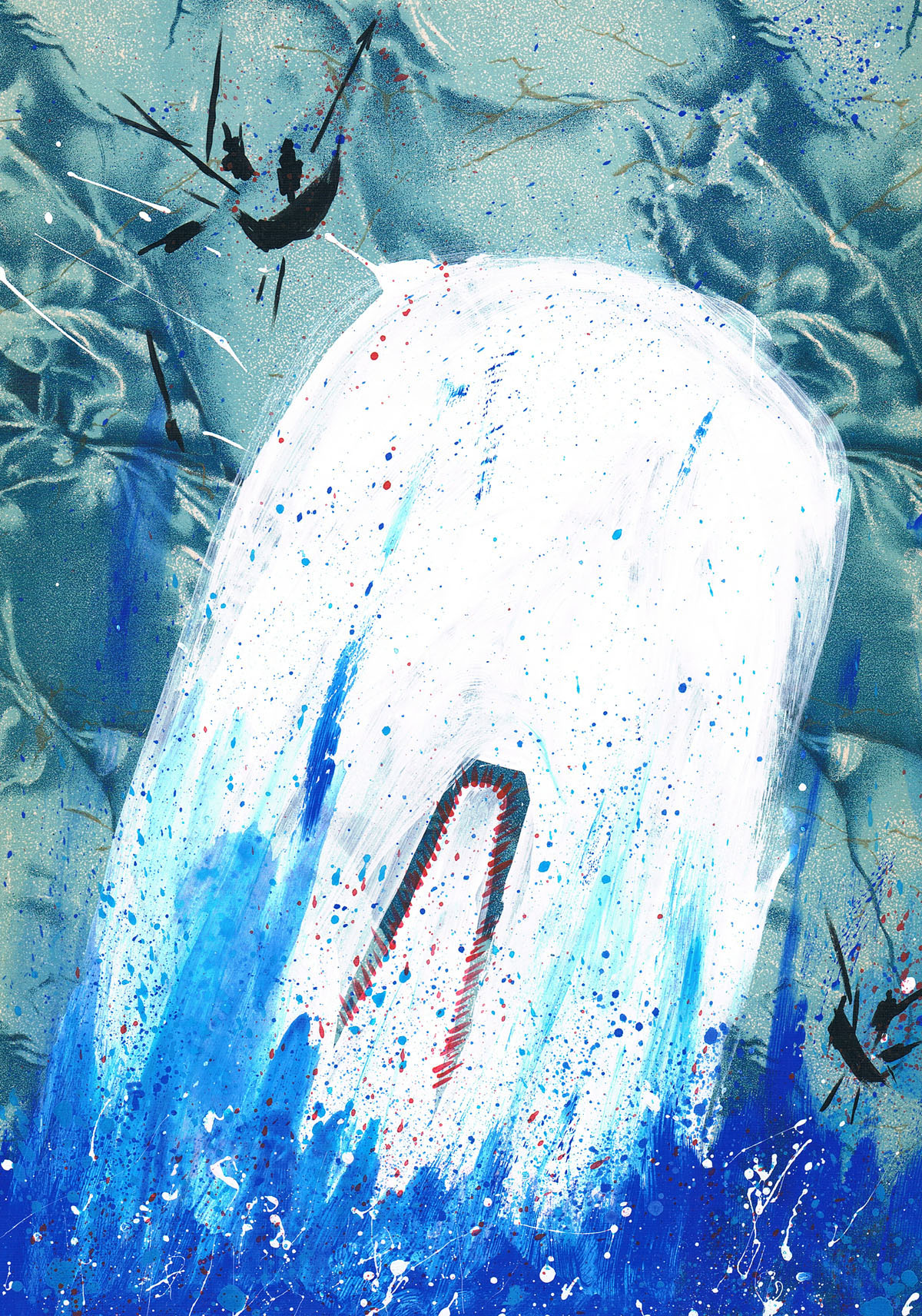

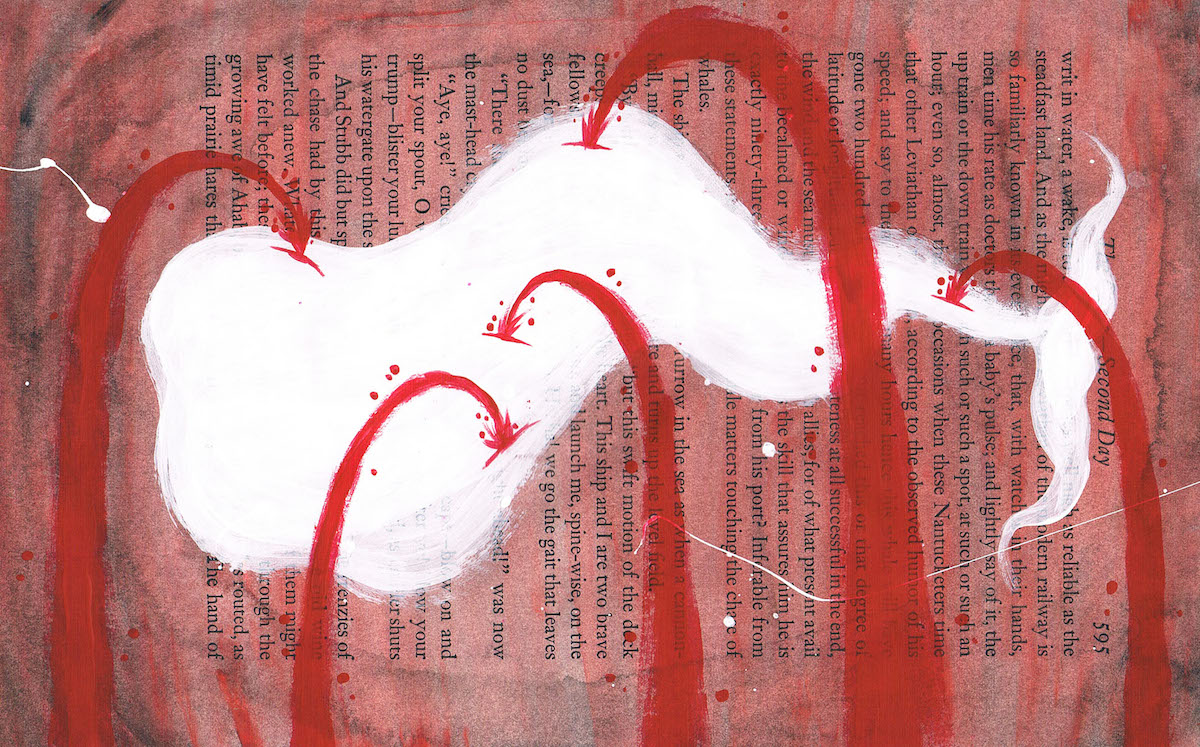
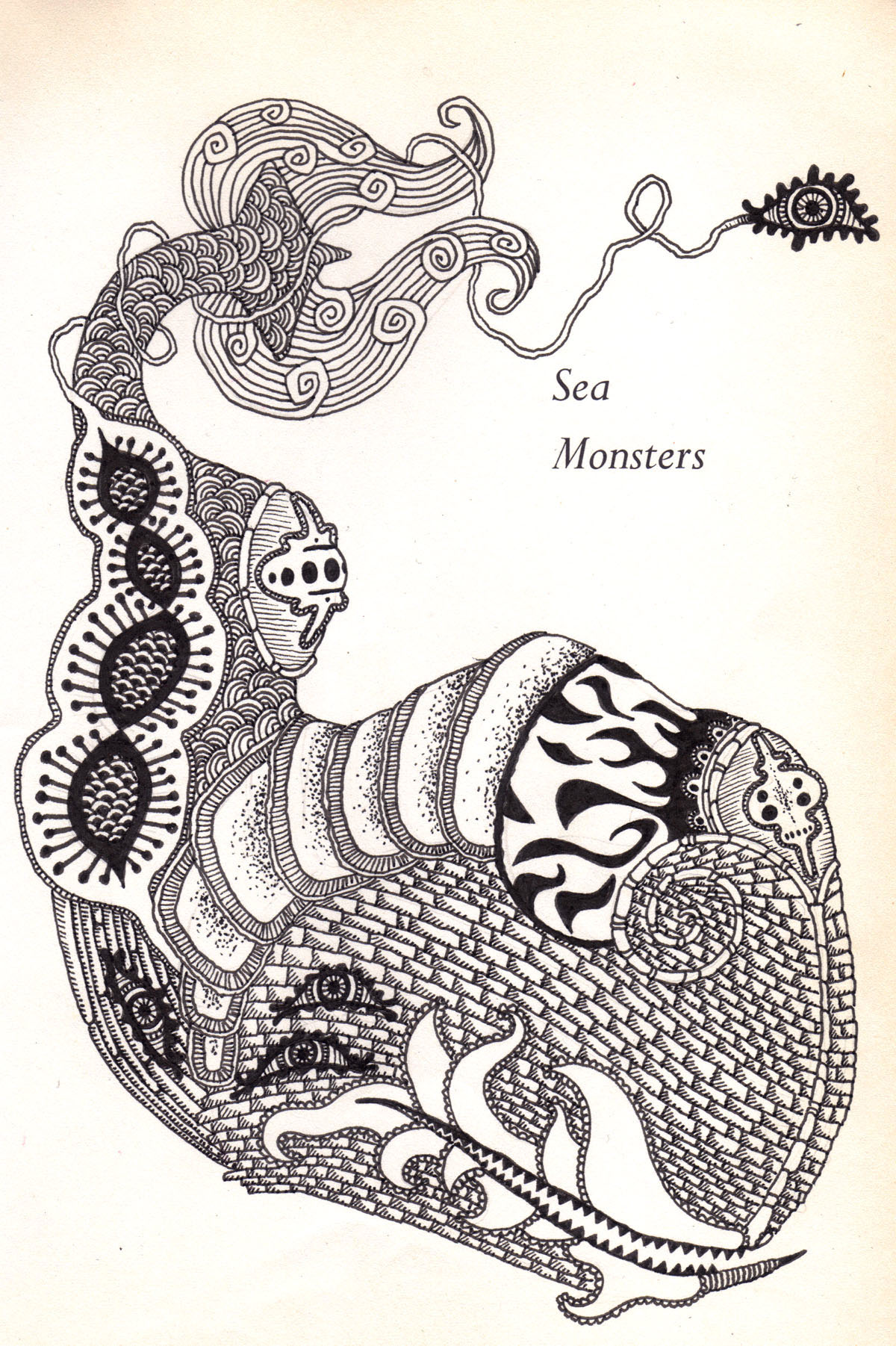
You an buy Moby-Dick in Pictures: One Drawing for Every Page (Tin House Books, 2011).
Via: Open Culture
Would you like to support Flashbak?
Please consider making a donation to our site. We don't want to rely on ads to bring you the best of visual culture. You can also support us by signing up to our Mailing List. And you can also follow us on Facebook, Instagram and Twitter. For great art and culture delivered to your door, visit our shop.


